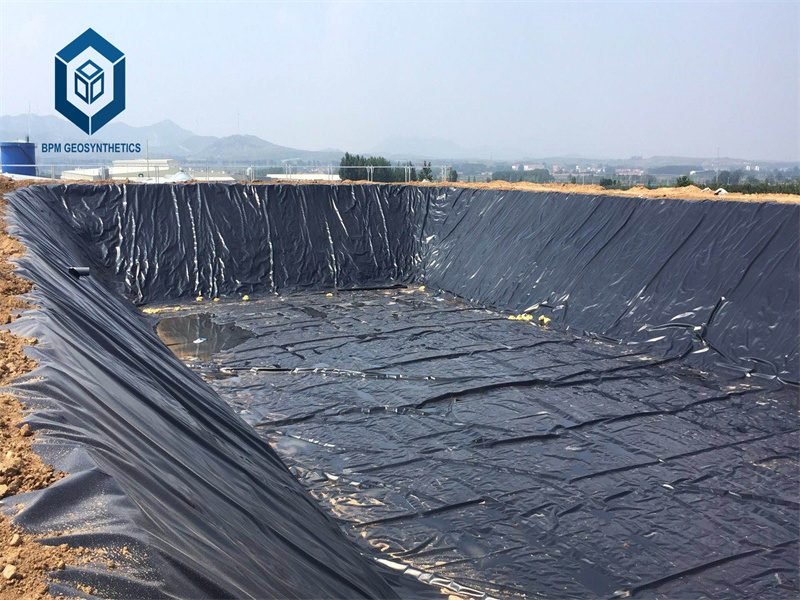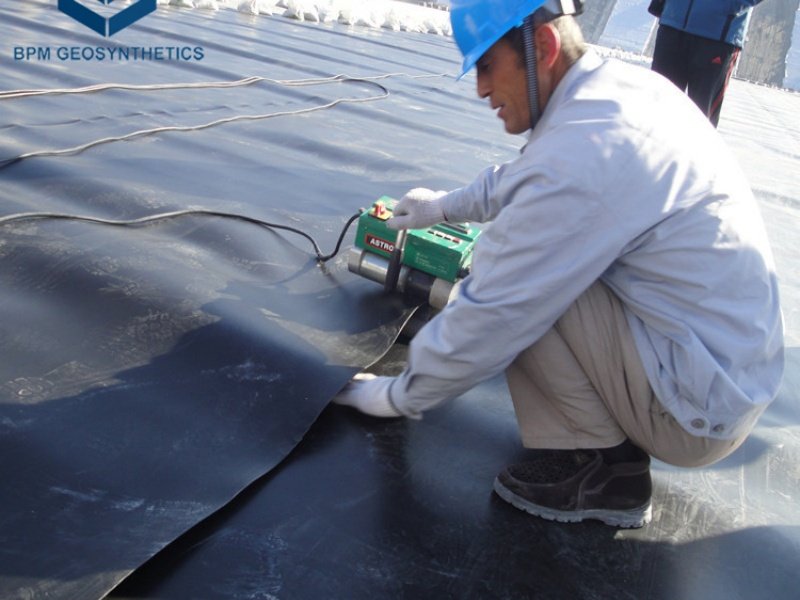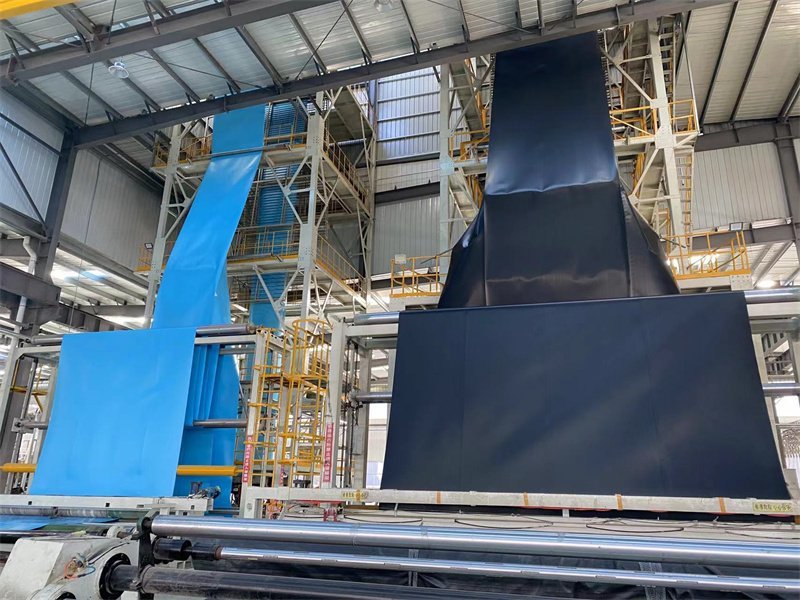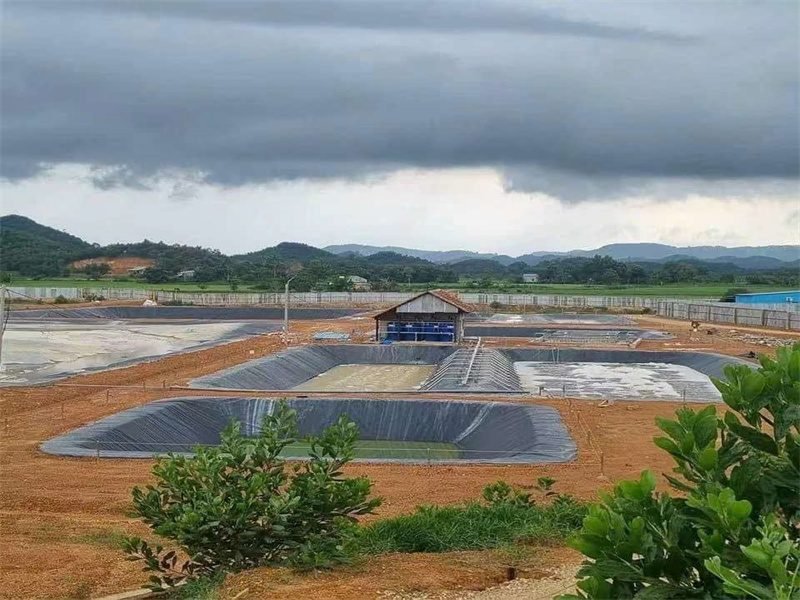Understanding Geomembrane 1mm and Its Applications
Understanding geomembrane 1mm and its applications is of great significance. In engineering, it can ensure quality, optimize design, and improve efficiency; in environmental terms, it can prevent pollution from spreading and protect the ecology; in the economic field, it can reduce costs and save resources; in social terms, it is conducive to ensuring public safety, promoting sustainable development, and enhancing public environmental awareness, and promoting harmonious coexistence between man and nature.

Introduction
1.1. Brief overview of geomembranes 1mm and their significance in various industries
Geomembrane (Geomembranas) is an anti-seepage material made of high molecular polymer as the base material. It plays a key role in environmental protection, water conservancy, mining, construction, agriculture and other fields. Its core significance lies in achieving anti-seepage, isolation and environmental protection functions through physical barriers.
1.2. Introduction to geomembrane 1mm as a specific type of geomembrana
Geomembrane 1mm refers to a thin, flexible sheet of synthetic material with a nominal thickness of 1 millimeter (mm), designed specifically to act as a low-permeability barrier in civil engineering, environmental protection, and industrial applications. As a subset of geomembranes—a broader category of geosynthetic materials used for containment and separation—the 1mm variant stands out for its balance between cost-efficiency, flexibility, and adequate performance in scenarios where extreme durability or heavy-duty resistance is not the primary requirement.
1.3. Importance of understanding geomembrane 1mm and its applications
Understanding geomembrana 1mm is vital due to its excellent anti-seepage, corrosion resistance, and durability, ensuring environmental safety in projects like landfills and aquaculture, while cutting costs.
2. What is Geomembrane 1mm?
2.1. Definition and description of geomembrane 1mm
A geomembrane is an impermeable membrane made from polymeric materials (such as HDPE, LDPE, PVC, or EPDM) designed to provide a reliable barrier against seepage, leakage, or contamination. A 1mm geomembrane refers to a geomembrane with a thickness of 1 millimeter (0.04 inches).
2.2Material composition and manufacturing process
A geomembrane 1mm is typically made from HDPE, LDPE, PVC, or EPDM, with added carbon black (UV resistance) and stabilizers. The manufacturing process involves extrusion (blown/flat film) or calendering (PVC/EPDM), where melted polymer is formed into thin sheets, cooled, and rolled. Quality checks ensure uniform thickness (1mm) and strength. Used in ponds, landfills, and mining, it balances flexibility and cost but has lower puncture resistance than thicker variants.
III. Applications and advantages of Geomembrane 1mm
A 1mm geomembrane is a versatile, cost-effective geosynthetic barrier used in various engineering and environmental applications where fluid containment, seepage control, or contamination prevention is required. Made from durable polymers like HDPE, LDPE, PVC, or EPDM, this thickness balances flexibility, affordability, and performance for moderate-stress applications. Below are its key applications and advantages.
3.1. Applications of 1mm Geomembrane
3.1.1. Water Containment & Irrigation
– Ponds & Reservoirs: Used as liners for agricultural ponds, fish farms, and decorative water features.
– Irrigation Canals: Prevents water seepage, improving efficiency in water distribution.
– Rainwater Harvesting: Lines storage tanks to minimize leakage.
3.1.2. Environmental Protection
– Landfill Liners & Caps: Acts as a secondary barrier to prevent leachate contamination.
– Wastewater Treatment Lagoons: Contains effluents in industrial and municipal treatment plants.
– Secondary Containment: Lines spill containment areas around fuel tanks and chemical storage.
3.1.3. Mining & Industrial Uses
– Heap Leach Pads: Prevents chemical seepage in gold/copper extraction.
– Tailings Storage: Secures mining waste to avoid groundwater pollution.
– Process Water Ponds: Holds water used in mineral processing.
3.1.4. Agriculture & Aquaculture
– Biogas Digesters: Seals anaerobic digestion tanks for methane capture.
– Silage Covers: Protects animal feed from moisture and spoilage.
– Shrimp & Fish Ponds: Ensures water retention and prevents soil contamination.
3.1.5. Construction & Civil Engineering
– Tunnel Waterproofing: Acts as a moisture barrier in underground structures.
– Vapor Barriers: Prevents moisture ingress in foundations and basements.
– Temporary Erosion Control: Covers exposed soil during construction.

3.2 Advantages of 1mm Geomembrane
3.2.1. Cost-Effective
– Thinner than 1.5mm+ geomembranes, reducing material costs while still providing reliable performance.
3.2.2. Lightweight & Easy to Install
– Easier to transport, handle, and weld compared to thicker membranes, speeding up installation.
3.2.3. Flexibility & Conformability
– Adapts well to uneven surfaces (especially LDPE, PVC, and EPDM), reducing the risk of tears during placement.
3.2.4. Chemical & UV Resistance
– HDPE offers strong chemical resistance, while carbon black additives enhance UV durability for exposed applications.
3.2.5. Impermeability
– Effectively blocks water, gases, and contaminants, making it ideal for containment systems.
3.2.6. Moderate Durability
– Suitable for low-to-medium stress environments, though not recommended for heavy machinery traffic.
3.2.7. Customizable Material Options
– Available in HDPE (rigid, chemical-resistant), PVC (flexible), and EPDM (elastic, weather-resistant) to match project needs.

Summary
1mm geomembrane is a versatile and cost-effective geosynthetic solution, offering reliable fluid containment and environmental protection across diverse industries. Its moderate thickness strikes a balance between flexibility and durability, making it ideal for applications such as water storage, landfill liners, mining operations, and agricultural uses. While it provides excellent chemical resistance, UV stability, and impermeability, proper installation and subgrade preparation are crucial to maximize performance and longevity.
For projects requiring lightweight, economical, and easy-to-install barriers, a 1mm geomembrane is an excellent choice. However, in high-stress environments, thicker alternatives may be necessary. By selecting the right material—whether HDPE, PVC, LDPE, or EPDM—engineers and project managers can ensure optimal performance tailored to specific needs.
Ultimately, geomembrana 1mm plays a critical role in sustainable infrastructure, environmental protection, and efficient resource management, proving its value in modern engineering and construction.




